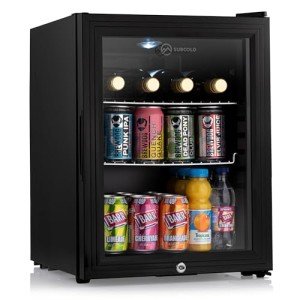The Leading Reasons Why People Perform Well In The Commercial Coolers Industry

The Role and Evolution of Commercial Coolers in the Modern Marketplace
In the busy landscape of modern commerce, the role of commercial coolers can not be overstated. Frydge of equipment are the foundation of different industries, from supermarkets and corner store to dining establishments and health care facilities. This article dives into the significance of commercial coolers, their types, advancements, and the effect they have on company operations.
Introduction to Commercial Coolers
Commercial coolers, likewise called commercial refrigerators, are created to keep a consistent and regulated temperature level environment for the storage of perishable products. Unlike home refrigerators, commercial coolers are built to stand up to heavy use and are geared up with functions that make sure dependability and performance in high-demand settings. They are crucial for protecting the quality and security of food, drinks, and other temperature-sensitive products.
Kinds Of Commercial Coolers
Refrigerated Display Cases
- Vertical Coolers: Commonly discovered in grocery stores and corner store, these systems enable customers to view and select products quickly.
- Horizontal Coolers: Often used for displaying beverages and small products, these systems can be either open or with glass doors.
Walk-in Coolers
- Walk-in Freezers: Large, room-sized units designed for bulk storage of frozen goods.
- Walk-in Coolers: Similar to walk-in freezers but maintain a greater temperature, ideal for keeping dairy, produce, and other perishables.
Undercounter Coolers
- Bar Coolers: Compact systems designed to fit under bar counters, ideal for storing beverages and mixers.
- Prep Coolers: Used in kitchens for storing components and ready foods.
Bottle Coolers
- Single-Door Coolers: Ideal for small areas, these systems are typically used in offices and small retail settings.
- Multi-Door Coolers: Larger systems with several compartments, ideal for high-volume sales environments.
Reach-in Coolers
- Single-Door Reach-ins: Compact and effective, these units are perfect for small companies and dining establishments.
- Double-Door Reach-ins: Offer more storage area and are appropriate for medium-sized operations.
Improvements in Commercial Coolers
The technology behind commercial coolers has actually advanced significantly for many years, causing more effective and sustainable choices. Some significant improvements include:
- Energy Efficiency: Modern coolers are designed to take in less energy, decreasing functional expenses and environmental effect. Features like LED lighting, high-efficiency compressors, and advanced insulation contribute to this.
- Smart Technology: Many commercial coolers now include smart features, such as remote monitoring, temperature informs, and automated defrost cycles. These technologies enhance operational performance and product security.
- Eco-Friendly Refrigerants: The use of eco-friendly refrigerants, such as R-290 (gas) and R-600a (isobutane), is becoming more prevalent, reducing the carbon footprint of commercial coolers.
- Modification: Manufacturers are offering more adjustable options, allowing businesses to tailor their coolers to particular needs, such as size, design, and features.
Influence On Business Operations
Commercial coolers play an essential function in numerous elements of business operations:
- Product Preservation: By keeping optimum temperature level conditions, coolers ensure that products stay fresh and safe for usage, reducing waste and enhancing client complete satisfaction.
- Operational Efficiency: Efficient cooling systems lessen downtime and maintenance expenses, permitting companies to concentrate on other vital operations.
- Customer Experience: Well-maintained and visually pleasing coolers can enhance the shopping experience, encouraging customers to make purchases.
- Regulative Compliance: Commercial coolers help services fulfill health and wellness guidelines, making sure compliance and avoiding charges.
FAQs
Q: What is the difference in between a commercial cooler and a home refrigerator?
- A: Commercial coolers are designed for heavy usage and are constructed with more robust products and advanced functions to make sure reliability and effectiveness in high-demand settings. Household refrigerators, on the other hand, are created for personal usage and are not geared up to manage the same level of usage or storage capacity.
Q: How can I ensure my commercial cooler is energy efficient?
- A: To guarantee energy effectiveness, pick a cooler with an Energy Star ranking, usage LED lighting, maintain regular cleaning and maintenance, and consider clever features like remote monitoring and automated defrost cycles.
Q: What are the benefits of using eco-friendly refrigerants in commercial coolers?
- A: Eco-friendly refrigerants, such as R-290 and R-600a, have a lower international warming capacity (GWP) and ozone deficiency capacity (ODP) compared to traditional refrigerants. This lowers the environmental effect of commercial coolers and helps services satisfy sustainability goals.
Q: How often should I clean and preserve my commercial cooler?
- A: Regular cleansing and upkeep are crucial for the ideal performance of commercial coolers. It is recommended to clean the cooler at least when a month and carry out a thorough maintenance check every 6 months. This consists of checking the seals, cleaning up the condenser coils, and making sure the temperature settings are precise.
Commercial coolers are essential in the modern market, providing vital services that make sure the quality and security of perishable items. With improvements in technology and a growing focus on sustainability, these systems are becoming more effective and eco-friendly. By comprehending the various kinds of commercial coolers and their influence on company operations, owners and supervisors can make educated decisions that benefit both their operations and the environment.

